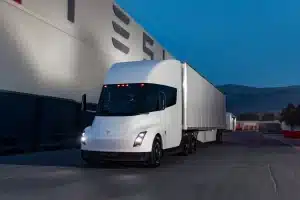- 🚗 Tesla holds a dominant 54.5% of the EV market share in California despite increased competition.
- 📉 Tesla’s market share decreased by 8.5% compared to the previous year, marking a full year of decline.
- 🚙 The Model Y continues to lead as the best-selling battery electric vehicle (BEV) and plug-in hybrid electric vehicle (PHEV).
- 🔝 Tesla remains nearly ten times ahead of its nearest competitor, Hyundai, in sales.
- 📈 Other automakers like Hyundai, BMW, and Kia managed to slightly increase their market shares.
In the ever-evolving electric vehicle (EV) landscape, Tesla remains a formidable player, especially in California, known as the heart of the EV revolution in the United States. Despite facing a year of market share decline and increasing competition, Tesla continues to lead the charge with its innovative technology and strategic positioning. This blog post dives deep into Tesla’s performance in the California market in 2024, analyzing trends and offering insights into its future trajectory and the competitive landscape.
Tesla’s Commanding Yet Diminishing Market Share
Tesla’s grip on the California EV market is undeniable. As of 2024, Tesla holds an impressive 54.5% of the state’s EV market share. However, this figure represents an 8.5% decrease from the previous year. This decline marks a significant shift as the company experiences a full year of dropping market share for the first time.
Key Factors Behind the Decline
- Increased Competition: A surge in competitors offering diverse EV models is undeniably affecting Tesla’s market dominance. Traditional automakers like Hyundai, BMW, and Kia have made substantial headway, appealing to a broader customer base with their enhanced vehicle offerings.
- Market Saturation: As the EV market in California matures, the saturation of Tesla vehicles could lead to more challenging growth prospects, pushing the company to innovate further to capture consumer interest.
- Consumer Choice and Preferences: Electric vehicle buyers now have more choices than ever. With appealing new models from competitors, consumers are increasingly exploring brands beyond Tesla.
Model Y: A Bright Spot in Tesla’s Portfolio
Despite the overall decline in market share, the Model Y stands out as Tesla’s crowning achievement. It continues to be the best-selling battery electric vehicle (BEV) and plug-in hybrid electric vehicle (PHEV) in the state.
Why the Model Y Continues to Thrive
- Versatile Design: The Model Y’s blend of spaciousness, range, and performance makes it suitable for a variety of lifestyles, appealing to families and urban commuters alike.
- Tech-Savvy Features: With Tesla’s cutting-edge Autopilot and other tech features, the Model Y offers a futuristic driving experience that resonates with tech enthusiasts.
- Market Positioning: Positioned in the lucrative SUV segment, the Model Y benefits from the growing global demand for SUVs, especially in urban regions.
Competition Heating Up: Rivals on Tesla’s Heels
While Tesla maintains a strong lead, the competitive landscape is becoming increasingly dynamic. Hyundai, BMW, and Kia have each gained a modest increase in market share, closing the gap to some extent.
Competitive Strategies to Watch
- Hyundai: Focusing on affordability and efficiency, with a commitment to expanding its EV lineup rapidly.
- BMW: Targeting the luxury segment with a strong emphasis on performance and brand prestige.
- Kia: Striving for a blend of affordability, style, and practical features that cater to a wide audience.
Looking Ahead: The Future of Tesla in California
Despite the challenges, Tesla’s long-term prospects in California remain promising, provided it adapts to market conditions effectively. Here are a few strategies that could secure its market leadership for the future:
- Innovation: Continued innovation in battery technology and vehicle design will be crucial. Introducing new models or enhancing existing ones to address consumer needs can provide a competitive edge.
- Sustainability Initiatives: By leveraging its sustainability narrative, Tesla can continue to attract environmentally conscious consumers.
- Enhancing Customer Experience: Improving customer touchpoints, from the showroom to after-sales service, could solidify Tesla’s brand loyalty amidst growing competition.
Conclusion
While Tesla faces mounting challenges, its position in the California market remains robust. The company’s ability to innovate and adapt in a fast-changing environment will be key to maintaining its dominance. As we move forward, competition will only intensify, making Tesla’s journey an exciting narrative to follow in the ever-expanding world of electric vehicles.





